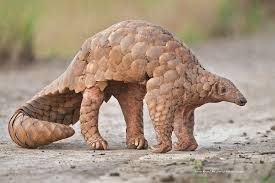Important Facts For Prelims
Indian Pangolin
- 15 Feb 2020
- 3 min read
Why in News
The Madhya Pradesh forest department, for the first time, has radio-tagged an Indian Pangolin.
- Radio-tagging involves attaching a transmitter to an animal to monitor its movements. Several wild animals — tigers, leopards and migratory birds — have been tagged over decades.
- Indian Pangolin has been radio-tagged in order to know its ecology and develop an effective conservation plan for it.
- This measure comes as the world gets ready to observe the ninth ‘World Pangolin Day’ on 15th February, 2020.
- World Pangolin Day, celebrated on the third Saturday in February every year, is an international attempt to raise awareness of pangolins and bring together stakeholders to help protect these species from extinction.
- The radio-tagging is part of a joint project by the forest department and non-profit organisation, the Wildlife Conservation Trust (WCT).
Pangolins in India
- Out of the eight species of pangolin, the Indian Pangolin (Manis crassicaudata) and the Chinese Pangolin (Manis pentadactyla) are found in India.
- Indian Pangolin is a large anteater covered by 11-13 rows of scales on the back. A terminal scale is also present on the lower side of the tail of the Indian Pangolin, which is absent in the Chinese Pangolin.
- Habitat
- Indian Pangolin is widely distributed in India, except the arid region, high Himalayas and the North-East. The species is also found in Bangladesh, Pakistan, Nepal and Sri Lanka.
- Chinese Pangolin is found in the Himalayan foothills in Eastern Nepal, Bhutan, Northern India, North-East Bangladesh and through Southern China.
- Threats to Pangolins in India: Hunting and poaching for local consumptive use (e.g. as a protein source and traditional medicine) and international trade for its meat and scales in East and South East Asian countries, particularly China and Vietnam.
- Protection Status
- IUCN Red List
- Indian Pangolin: Endangered
- Chinese Pangolin: Critically Endangered
- Both these species are listed under Schedule I, Part I of the Wildlife (Protection) Act, 1972.
- IUCN Red List




